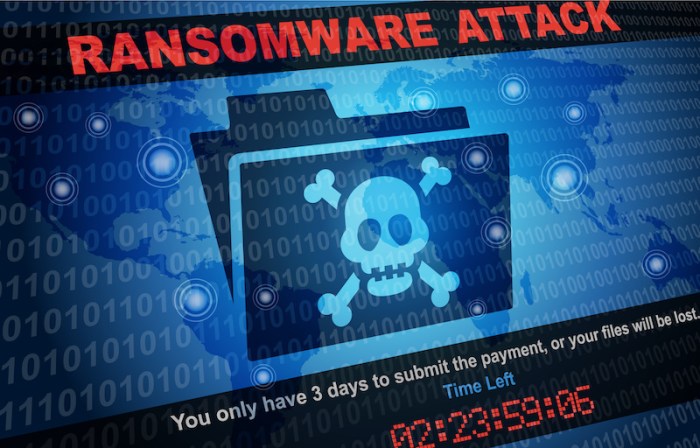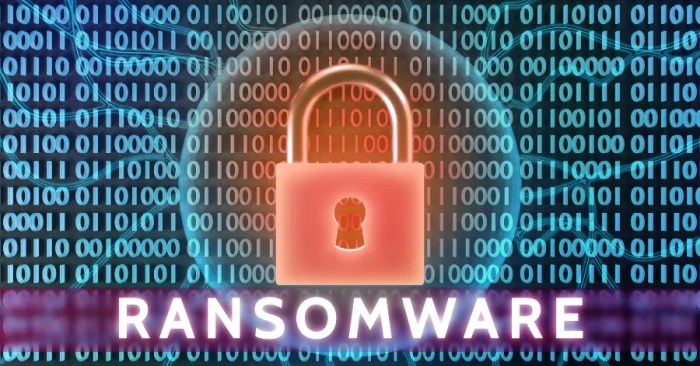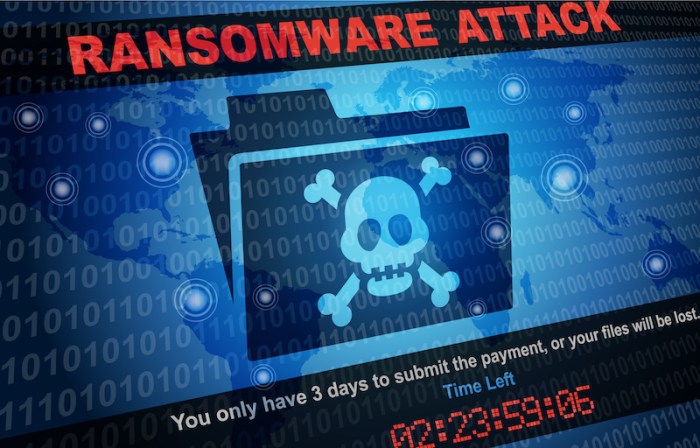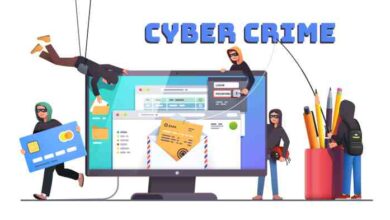
Ransomware Attacks: How Organizations Are Harmed
Ransomware attacks impact harm organizations in ways that go far beyond financial loss. These cyberattacks are becoming increasingly sophisticated and frequent, targeting businesses and individuals alike. The motives behind these attacks are clear: financial gain and disruption. Hackers exploit vulnerabilities in systems and human behavior, using tactics like phishing emails and malicious websites to infiltrate networks and deploy ransomware.
Once inside, they encrypt critical data, rendering it inaccessible and demanding a ransom for its recovery.
The consequences of a successful ransomware attack can be devastating. Organizations face immediate downtime, halting operations and impacting productivity. Data breaches can lead to significant financial losses, including legal fees, regulatory fines, and the cost of restoring compromised systems. The reputational damage inflicted by a ransomware attack can be equally detrimental, eroding customer trust and impacting brand value.
The Rise of Ransomware Attacks

Ransomware attacks have become increasingly prevalent and sophisticated, posing a significant threat to organizations worldwide. These attacks have evolved from simple encryption schemes to highly complex and targeted operations, causing significant financial and operational disruptions.
The Growing Prevalence of Ransomware Attacks
The frequency of ransomware attacks has been steadily increasing over the past few years. According to a report by Cybersecurity Ventures, global ransomware damage costs are expected to reach $265 billion by 2031. The rise in ransomware attacks can be attributed to several factors, including the increasing availability of ransomware-as-a-service (RaaS) platforms, the growth of the dark web, and the increasing sophistication of cybercriminals.
- In 2021, the FBI reported a 200% increase in ransomware attacks compared to the previous year.
- A study by Sophos found that 60% of organizations had experienced a ransomware attack in the past year.
- The average ransom demand in 2022 was $1.3 million, according to a report by Coveware.
Motives Behind Ransomware Attacks
The primary motive behind ransomware attacks is financial gain. Cybercriminals demand payment from victims in exchange for decrypting their data. However, ransomware attacks can also be motivated by disruption and espionage.
- Financial Gain:Ransomware attacks are a lucrative business for cybercriminals. They can earn millions of dollars by targeting high-profile organizations and demanding large ransoms.
- Disruption:Ransomware attacks can cause significant disruption to an organization’s operations. This can include downtime, data loss, and reputational damage.
- Espionage:Some ransomware attacks are motivated by espionage. Cybercriminals may steal sensitive data in addition to encrypting it, which can be sold on the dark web or used for blackmail.
Impact on Organizations: Ransomware Attacks Impact Harm Organizations
Ransomware attacks inflict significant and far-reaching consequences on organizations, disrupting operations, eroding financial stability, and damaging reputation. These attacks not only cause immediate disruption but also have long-term implications that can affect an organization’s ability to recover and thrive.
Ransomware attacks are a serious threat to organizations, causing significant financial losses and operational disruptions. It’s important to remember that data security is paramount, and we should always be prepared for potential threats. While we focus on protecting our digital lives, it’s also a good idea to cherish the real-life memories we create with our families.
A great way to do this is by making a family photo board book, which you can find instructions for at make a family photo board book. This will allow you to create a tangible record of your family’s journey, a reminder of the things that truly matter, even in the face of cyber threats.
Financial Losses
The financial impact of ransomware attacks is multifaceted, encompassing direct costs and indirect losses. Organizations face significant expenses related to data breaches, downtime, and recovery efforts.
- Data Breach Costs:The cost of recovering stolen or encrypted data can be substantial, involving data recovery services, forensic investigations, and legal expenses. The financial burden can be further amplified by the need to comply with data breach notification regulations, potentially leading to hefty fines and penalties.
For example, the average cost of a data breach in 2022 was estimated to be $4.24 million, according to the Ponemon Institute.
- Downtime Costs:Ransomware attacks can bring business operations to a standstill, leading to significant revenue loss. The downtime associated with system recovery, data restoration, and business process adjustments can be substantial, particularly for organizations heavily reliant on technology. The cost of lost productivity, missed deadlines, and disrupted customer service can be substantial.
For example, a major ransomware attack on a global manufacturing company in 2021 resulted in an estimated $100 million in lost revenue due to production downtime.
- Recovery Costs:The process of recovering from a ransomware attack can be lengthy and expensive. It involves restoring data, rebuilding systems, and implementing enhanced security measures. Organizations may need to hire specialized cybersecurity consultants, invest in new security software, and train employees on best practices.
Ransomware attacks can cripple organizations, leading to lost productivity, financial strain, and reputational damage. It’s crucial to implement robust security measures, like microsoft phishing passwordless authentication , which can help prevent unauthorized access and protect sensitive data. By adopting a multi-layered approach to security, organizations can significantly reduce their vulnerability to ransomware attacks and safeguard their operations.
The cost of recovery can be substantial, depending on the complexity of the attack, the size of the organization, and the extent of data loss.
Reputational Damage
Ransomware attacks can severely damage an organization’s reputation, eroding trust among customers, partners, and investors. The negative publicity associated with data breaches and security failures can have a long-lasting impact on an organization’s brand image and market standing.
- Loss of Customer Trust:Customers may lose confidence in an organization’s ability to protect their data and privacy following a ransomware attack. This can lead to decreased customer loyalty, reduced sales, and difficulty attracting new customers. For example, a major retailer that suffered a ransomware attack experienced a significant decline in customer satisfaction ratings and online reviews, resulting in a loss of revenue and market share.
- Damage to Brand Image:Ransomware attacks can negatively impact an organization’s brand image, tarnishing its reputation for reliability, security, and competence. The negative publicity associated with data breaches can be damaging, especially in industries where trust is paramount. For example, a healthcare provider that experienced a ransomware attack faced significant criticism from patients and regulators, leading to a decline in patient confidence and a loss of market share.
- Investor Concerns:Investors may become wary of organizations that have been victims of ransomware attacks, fearing potential financial losses and reputational damage. This can lead to decreased investment, reduced stock prices, and difficulty attracting new investors. For example, a financial institution that suffered a ransomware attack experienced a significant drop in its stock price, as investors expressed concerns about the organization’s security posture and future prospects.
Types of Ransomware Attacks
Ransomware attacks are not a monolith. Different types of ransomware employ diverse tactics and techniques, each with its own unique characteristics and impact. Understanding these distinctions is crucial for organizations to implement effective security measures and mitigate the risk of falling victim to these attacks.
Encrypting Ransomware
Encrypting ransomware is the most common type of ransomware attack. It operates by encrypting the victim’s files, rendering them inaccessible without the decryption key held by the attackers.
- Encryption Process:Encrypting ransomware utilizes strong encryption algorithms, often employing techniques like AES-256, to scramble the victim’s data. This makes it virtually impossible for victims to recover their files without the decryption key.
- Ransom Demand:Once the data is encrypted, attackers typically demand a ransom payment, often in cryptocurrency, in exchange for the decryption key. The ransom amount can vary significantly depending on factors such as the volume of data encrypted, the type of organization targeted, and the attackers’ demands.
- Examples:Some notable examples of encrypting ransomware include:
- WannaCry:A highly impactful ransomware attack that spread rapidly in 2017, encrypting files on computers worldwide and causing significant disruptions to businesses and critical infrastructure.
- NotPetya:A destructive ransomware attack that targeted businesses in Ukraine and globally in 2017, causing billions of dollars in damage and impacting critical infrastructure.
- Ryuk:A sophisticated ransomware variant that targets large enterprises, often targeting their critical systems and data. Ryuk is known for its advanced tactics and high ransom demands.
Extortionware
Extortionware, also known as “data-locking ransomware,” goes beyond simply encrypting files. Attackers employ tactics to steal sensitive data and threaten to leak it publicly unless a ransom is paid.
- Data Exfiltration:Extortionware attacks typically involve the theft of sensitive data from the victim’s systems. This data might include customer information, financial records, or proprietary business data.
- Leak Threat:Once the data is stolen, attackers threaten to leak it publicly if the ransom is not paid. This threat creates significant reputational and financial risks for victims, as a data breach can lead to regulatory fines, lawsuits, and loss of customer trust.
- Examples:Some notable examples of extortionware attacks include:
- REvil:A ransomware group known for targeting high-profile organizations, including law firms, healthcare providers, and technology companies. REvil is notorious for its aggressive extortion tactics and high ransom demands.
- Clop:A ransomware group that has been linked to several high-profile data breaches, including the theft of sensitive data from companies like Kaseya and Accellion. Clop often uses sophisticated techniques to gain access to victim networks and steal data before deploying ransomware.
Methods of Infection

Ransomware attacks often exploit vulnerabilities in systems and user behavior to gain access and encrypt data. Attackers employ a variety of techniques to infiltrate networks and deploy ransomware, ranging from exploiting software vulnerabilities to deceiving users through social engineering tactics.
Understanding these methods is crucial for organizations to implement appropriate security measures and protect their valuable assets.
Phishing Emails
Phishing emails are a common method used by attackers to trick users into clicking malicious links or opening infected attachments. These emails often appear legitimate, mimicking communications from trusted sources like banks, online retailers, or government agencies. The goal is to induce users to reveal sensitive information, such as login credentials or credit card details, or to download malware onto their devices.
“Phishing attacks are a major threat to businesses of all sizes. In 2022, the FBI’s Internet Crime Complaint Center (IC3) received over 800,000 complaints of phishing scams, with reported losses exceeding $4.2 billion.”
Malicious Websites
Attackers often create malicious websites that mimic legitimate ones, luring unsuspecting users to download ransomware or compromise their devices. These websites may offer free software, enticing content, or seemingly harmless downloads. Once a user visits the site, their computer can become infected with ransomware without their knowledge.
“A 2023 report by the Cybersecurity and Infrastructure Security Agency (CISA) found that malicious websites are a growing vector for ransomware attacks, accounting for nearly 30% of all reported incidents.”
Software Vulnerabilities
Attackers often exploit vulnerabilities in software to gain unauthorized access to systems and deploy ransomware. These vulnerabilities can exist in operating systems, applications, or even firmware. Once a vulnerability is discovered, attackers can develop and distribute exploits that can be used to install ransomware without user interaction.
“The WannaCry ransomware attack in 2017, which infected hundreds of thousands of computers worldwide, exploited a vulnerability in Microsoft’s Windows operating system.”
Ransomware attacks are a serious threat to organizations, causing data loss, financial damage, and reputational harm. It’s a constant reminder of the importance of robust cybersecurity measures. But sometimes, it’s good to take a step back and remember that not every technological delay is a disaster.
For instance, while the rollout of Spotify HiFi has been slow, as this article points out , it doesn’t necessarily mean the service is doomed. Ultimately, the focus should always be on protecting sensitive data and mitigating the impact of potential cyberattacks, regardless of how long it takes for a new streaming feature to launch.
Security Awareness Training
Employee education and security awareness training are essential to mitigate the risks associated with ransomware attacks. By understanding the common tactics used by attackers, employees can be more vigilant and less susceptible to phishing scams and other social engineering techniques.
“Studies have shown that employees who have received security awareness training are significantly less likely to fall victim to phishing attacks and other social engineering tactics.”
Data Encryption and Exfiltration
Ransomware encrypts data, rendering it inaccessible to the victim. This encryption process disrupts the normal functioning of an organization, causing severe disruptions to operations and data access. While the primary goal of ransomware is to extort money from victims by demanding payment for decryption keys, attackers often employ a second tactic: data exfiltration.
This involves stealing sensitive data before or after encryption, causing additional harm and financial losses.
Data Encryption Process and Impact
Ransomware employs powerful encryption algorithms to scramble data, rendering it unusable. The encryption process involves the use of a unique key, typically generated by the ransomware itself. This key is used to encrypt the data, making it impossible to access without the corresponding decryption key.
Once the data is encrypted, the ransomware may display a ransom note demanding payment in exchange for the decryption key. The impact of data encryption is significant, disrupting critical operations, causing downtime, and potentially leading to financial losses.
Data Exfiltration Techniques
Attackers often exfiltrate sensitive data before or after encryption, creating further harm. They use various techniques to steal data, including:
- Network Monitoring:Attackers may monitor network traffic to identify and capture sensitive data being transmitted over the network.
- Data Scraping:They may use automated tools to scrape data from websites, databases, or other online sources.
- Exploiting Weak Security Measures:Attackers may exploit vulnerabilities in software or systems to gain unauthorized access to data.
- Credential Theft:Attackers may steal credentials, such as usernames and passwords, to gain access to sensitive data.
Techniques to Hide Activities and Evade Detection
Attackers use various techniques to hide their activities and evade detection, making it challenging to prevent and respond to ransomware attacks. These techniques include:
- Using Obfuscation:Attackers may use techniques to disguise their malicious code and make it difficult to analyze or detect.
- Using Proxy Servers:Attackers may use proxy servers to hide their location and make it difficult to track their activities.
- Exploiting Legitimate Software:Attackers may use legitimate software tools or programs to execute their malicious code, making it appear as legitimate activity.
- Using Multiple Infection Vectors:Attackers may use multiple infection vectors, such as email attachments, malicious websites, or software vulnerabilities, to increase the chances of success.
Recovery and Mitigation Strategies
Ransomware attacks can have devastating consequences for organizations, disrupting operations, compromising sensitive data, and causing significant financial losses. Recovering from such an attack requires a well-defined and comprehensive strategy that addresses data restoration, system cleanup, and long-term security improvements.
Data Restoration and System Cleanup
A crucial step in recovering from a ransomware attack is restoring data from backups. Organizations should have a robust backup and recovery plan in place that includes regular backups of all critical data and systems. This plan should encompass both on-site and off-site backups, ensuring that data is stored in multiple locations to mitigate the risk of data loss due to physical damage or cyberattacks.
- Verify Backup Integrity:Before restoring data, it is essential to verify the integrity of backups to ensure that they are not compromised by the ransomware. This can be done by using checksums or other verification methods.
- Choose the Right Recovery Method:Organizations should choose the appropriate recovery method based on the nature of the attack and the severity of data loss. This could involve restoring data from backups, using data recovery tools, or a combination of both.
- System Cleanup:Once data is restored, it is crucial to thoroughly clean up infected systems to prevent reinfection. This includes removing any malicious files, software, or configurations related to the ransomware.
- Patching and Updates:Ensure all systems are up-to-date with the latest security patches and software updates to close any vulnerabilities that could be exploited by ransomware.
Importance of a Robust Backup and Recovery Plan
Having a robust backup and recovery plan is essential for minimizing the impact of a ransomware attack. This plan should include the following key elements:
- Regular Backups:Backups should be performed regularly, ideally on a daily or hourly basis for critical data. This ensures that there are multiple backup copies available in case of data loss.
- Off-site Backup Storage:Storing backups off-site, such as in a cloud-based service or a secure physical location, helps protect against data loss due to physical damage or on-site cyberattacks.
- Backup Verification:Regularly verify the integrity and recoverability of backups to ensure they are functional and can be used to restore data effectively.
- Backup Rotation:Implement a backup rotation strategy to ensure that older backups are retained for a specified period, providing a historical record of data.
Incident Response Procedures
Organizations should have well-defined incident response procedures to effectively handle ransomware attacks. These procedures should include the following steps:
- Detection and Containment:Quickly detect the attack and contain its spread to prevent further damage. This may involve isolating infected systems, shutting down network connections, and implementing other containment measures.
- Investigation and Analysis:Conduct a thorough investigation to determine the scope of the attack, the source of the infection, and the type of ransomware used.
- Recovery and Restoration:Restore affected systems and data from backups, ensuring that the recovery process is thorough and complete.
- Post-incident Review:Conduct a post-incident review to identify weaknesses in security controls and processes that allowed the attack to occur. Implement necessary improvements to strengthen defenses and prevent future attacks.
Role of Cybersecurity Professionals
Cybersecurity professionals play a critical role in mitigating the impact of ransomware attacks. They are responsible for:
- Developing and Implementing Security Policies:Cybersecurity professionals develop and implement comprehensive security policies to protect against ransomware attacks. These policies cover areas such as user access control, data encryption, and network security.
- Conducting Security Assessments:Regular security assessments help identify vulnerabilities that could be exploited by ransomware. These assessments can include penetration testing, vulnerability scanning, and threat modeling.
- Incident Response:Cybersecurity professionals are responsible for responding to ransomware attacks. They lead the incident response process, coordinating with other teams to contain the attack, restore systems, and investigate the incident.
- Awareness and Training:Cybersecurity professionals educate employees about ransomware threats and best practices for preventing attacks. They provide training on recognizing suspicious emails, phishing attacks, and other tactics used by attackers.
Prevention and Security Measures
Ransomware attacks are a serious threat to organizations of all sizes. The best way to protect your organization is to implement a comprehensive security strategy that includes multiple layers of defense. This includes implementing strong security measures and educating your employees about ransomware threats.
Strong Passwords and Multi-Factor Authentication
Strong passwords are a fundamental element of cybersecurity. They should be complex, unique, and regularly changed. Multi-factor authentication (MFA) adds an extra layer of security by requiring users to provide two or more forms of identification before granting access to sensitive data.
This makes it much harder for attackers to gain unauthorized access to systems, even if they have stolen a password.
Software Updates
Software updates are essential for patching vulnerabilities that attackers can exploit. Organizations should ensure that all software, including operating systems, applications, and security tools, is kept up-to-date with the latest patches and updates. This includes both internal and external software, as well as any third-party applications used by the organization.
Security Tools
Several security tools can help organizations protect themselves from ransomware attacks. These tools include:
- Firewalls: Firewalls act as a barrier between an organization’s network and the outside world, blocking unauthorized access and preventing malicious traffic from entering the network. They can be implemented at the network perimeter, on individual devices, or in the cloud.
- Intrusion Detection Systems (IDS): IDSs monitor network traffic for suspicious activity and alert administrators to potential threats. They can detect and prevent attacks that may not be blocked by firewalls, such as zero-day exploits or advanced persistent threats.
- Endpoint Protection: Endpoint protection software protects individual devices, such as computers, laptops, and mobile devices, from malware and other threats. It can detect and remove ransomware before it can encrypt data and can also help prevent the spread of ransomware to other devices on the network.
Data Backup and Recovery
Regularly backing up data is crucial for recovering from a ransomware attack. Organizations should implement a robust backup strategy that includes backing up data to multiple locations, both on-site and off-site. This ensures that even if one backup location is compromised, other backups are still available.
It is important to test backups regularly to ensure they are working properly.
Employee Training
Employees are often the weakest link in an organization’s security chain. Educating employees about ransomware threats and best practices for avoiding attacks is essential. This includes training on how to recognize phishing emails, identify malicious attachments, and report suspicious activity.
Security Awareness Programs
Security awareness programs can help educate employees about ransomware threats and best practices for avoiding attacks. These programs can include phishing simulations, security training videos, and regular security updates. Organizations should also consider implementing a security awareness program that includes regular training and assessments.
Network Segmentation
Network segmentation can help limit the impact of a ransomware attack by dividing the network into smaller, isolated segments. This makes it more difficult for attackers to spread ransomware to other parts of the network if one segment is compromised.
Regular Security Audits
Regular security audits can help identify vulnerabilities that could be exploited by attackers. These audits should be conducted by qualified security professionals and should cover all aspects of the organization’s security infrastructure.
Incident Response Plan
Organizations should have a comprehensive incident response plan that Artikels the steps to be taken in the event of a ransomware attack. This plan should include procedures for containing the attack, recovering data, and communicating with stakeholders.
Regular Security Updates, Ransomware attacks impact harm organizations
Regular security updates are crucial for patching vulnerabilities that attackers can exploit. Organizations should ensure that all software, including operating systems, applications, and security tools, is kept up-to-date with the latest patches and updates. This includes both internal and external software, as well as any third-party applications used by the organization.
Use of Security Software
Security software is essential for protecting against ransomware attacks. This software can detect and block malicious files, prevent unauthorized access to sensitive data, and monitor network activity for suspicious behavior. Organizations should choose security software that is specifically designed to protect against ransomware attacks and that is regularly updated with the latest threat intelligence.
Secure Configuration
Secure configuration is important for preventing ransomware attacks. This includes ensuring that all systems and devices are configured with the latest security settings and that all unnecessary services and ports are disabled. Organizations should also regularly review their security configuration and make adjustments as needed.







